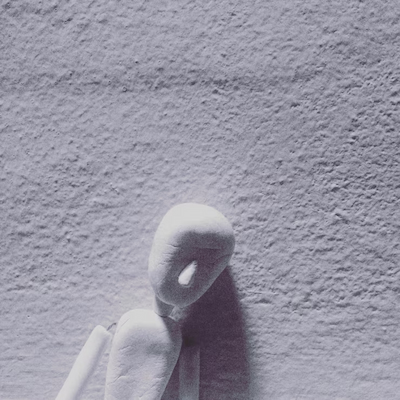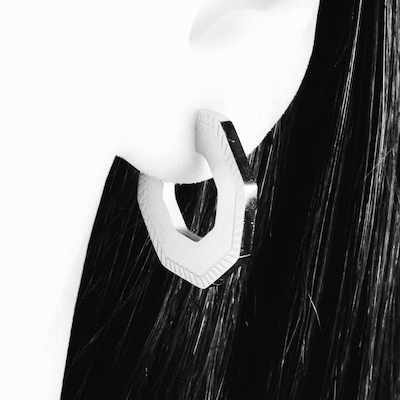
Minimalism in painting and sculpture is an artistic movement that emerged in the mid-20th century, characterized by a search for simplicity and clarity. Minimalist artists reject excessive ornamentation and emotional complexity, focusing instead on basic forms, limited colors, and the essence of material. This approach is a response to earlier movements such as Expressionism and Abstract Art, which emphasized subjectivity and emotion. Minimalism proposes a new way of viewing art, where simplicity becomes a powerful means of expression.
In minimalist painting and sculpture, the goal is to create works that speak for themselves, without the need for complex interpretations. Artists use industrial materials and techniques that emphasize the purity of form. This aesthetic is not merely a stylistic choice, but a reflection on the relationship between the viewer and the artwork. Space, light, and the perception of the environment are fundamental elements that interact with the piece, creating a unique and immersive experience. Minimalism is therefore a form of expression that seeks the essence of what it means to be human, using art as a medium for direct and stripped-down communication.
How Do Minimalist Techniques Work in Painting and Sculpture?
Minimalist techniques in painting and sculpture are based on the use of simple geometric forms and a restricted color palette. Minimalist artists often work with flat and repetitive surfaces, exploring the relationship between the artwork and the surrounding space. The central idea is that the simplicity of form and clarity of composition can convey profound and meaningful messages. This leads to the creation of works that are often interpreted differently by each viewer, depending on their own experience and perception.
One of the main techniques used in minimalism is repetition, as seen in the works of artists like Donald Judd and Agnes Martin. Repetition not only creates a visual rhythm but also provokes reflection on the nature of art. Each repetition is a variation that invites the viewer to observe subtle nuances and contemplate the work more deeply. Additionally, material choice is crucial; many minimalist artists use industrial materials such as stainless steel, glass, and plastic to emphasize the idea that art can be made from what is considered “common” or “ordinary.”
Another important technique is the relationship between the artwork and the space. In minimalism, sculpture is often designed to interact with its surroundings, creating a three-dimensional experience that involves the viewer. This can be seen in works that occupy space in a way that invites people to move around or through them. Lighting also plays a crucial role, as the way light falls on the piece can alter its perception and meaning. Thus, minimalism is not only about the work itself, but also about the experience it provides.
Finally, minimalism challenges traditional conventions of art, questioning what is considered beautiful and valuable. By focusing on essence and simplicity, minimalist artists invite us to reconsider our own perceptions and find beauty in the simplest things. This approach often leads to a new appreciation of art, where the viewer is encouraged to engage more deeply with the piece and reflect on their own emotions and thoughts.

Advantages of Embracing Minimalism in Painting and Sculpture as a Form of Pure Expression
Embracing minimalism in painting and sculpture offers several advantages for both artists and viewers. One of the main benefits is clarity of communication. By eliminating unnecessary elements, artists are able to convey their ideas in a more direct and impactful way. This allows the viewer to focus on the essence of the work, rather than getting lost in complex details. This clarity can result in a deeper and more meaningful experience for the observer.
Another advantage is the versatility of minimalism. Minimalist techniques can be applied to a wide variety of materials and styles, allowing artists to explore different forms of expression. This flexibility is especially appealing to those who wish to experiment with new approaches in art without being confined by traditional conventions. Minimalism also adapts well to different contexts, whether in art galleries, public spaces, or domestic environments, expanding its reach and impact.
Additionally, minimalism can promote a sense of tranquility and serenity. In a world often overwhelmed by visual stimuli and information, minimalist works offer a space for reflection and contemplation. This aesthetic simplicity can provide relief and comfort, allowing viewers to disconnect from daily chaos and connect with their own emotions and thoughts. This experience can be particularly valuable at a time when many seek ways to find inner peace.
Lastly, minimalism can also be seen as a form of social and cultural critique. By challenging the need for extravagance and ostentation, minimalist artists invite the public to reflect on consumerism and the superficiality of contemporary society. This approach can inspire a shift in perspective, encouraging people to value what truly matters and to find beauty in simplicity. Thus, minimalism is not just an aesthetic but a philosophy that can positively impact both life and art.
How to Create Minimalist Art: Tips and Strategies
Creating minimalist art may seem simple, but it requires a deep understanding of the principles that define this style. Here are some tips and strategies for those who want to explore minimalism in painting and sculpture:
Material Choice: Choose materials that emphasize simplicity and purity. Materials such as wood, metal, glass, and paper can be used creatively to create impactful minimalist works.
Color Limitation: Use a restricted color palette. Neutral tones or a combination of a few colors can help highlight the form and texture of your work, creating a stronger visual focus.
Geometric Forms: Work with simple geometric shapes. Rectangles, squares, circles, and lines can be combined in innovative ways to create harmonious and balanced compositions.
Negative Space: Take into account the negative space in your work. White or empty space can be just as powerful as the elements you include, creating an interesting visual dialogue.
Repetition and Variation: Experiment with the repetition of forms or patterns. Repetition can create a visual rhythm and invite the viewer to explore different layers of meaning in your work.
Interaction with the Environment: Think about how your work interacts with the surrounding space. Minimalist sculpture can be designed to transform the environment, inviting the viewer to move and experience the work from different angles.
Creating minimalist art is an exercise in reduction and refinement. By focusing on the essence of form and color, artists can find new ways to express their ideas and emotions. This journey can be extremely rewarding, leading to the discovery of a unique and personal style.

Did You Enjoy Learning About Minimalism in Painting and Sculpture as a Form of Pure Expression?
Minimalism in painting and sculpture is an art form that goes beyond aesthetic simplicity. It invites us to reflect on the essence of artistic expression and the relationship we have with the world around us. By exploring this approach, you may discover new ways of seeing and feeling art.
If you found minimalism interesting, there is a vast universe of works and artists to explore. Each minimalist piece offers a new perspective and an opportunity to connect with what is truly essential. Minimalist art is a journey well worth taking.
Frequently Asked Questions
What is minimalism in painting and sculpture as a form of pure expression?
Minimalism in painting and sculpture is when artists use the minimum number of elements. They aim for simplicity and clarity. It’s a way to focus on the essence of art.
Who are the main minimalist artists?
Some well-known artists include Donald Judd, Agnes Martin, and Frank Stella. They used simple forms and neutral colors. Their works are impactful and widely recognized.
How does minimalism change the perception of art?
Minimalism makes you look more closely. It highlights form and color without distractions. This can lead to new emotions and reflections about what you see.
Is minimalism in painting and sculpture a current trend?
Although it began in the 1960s, minimalism remains relevant. Contemporary artists draw inspiration from it, offering new interpretations. Simplicity never goes out of style.
How can I apply minimalism in my own art?
Start by reducing unnecessary details. Use simple shapes and a limited color palette. Focus on the message you want to convey. Minimalism in painting and sculpture as a form of pure expression is about being clear and direct.

